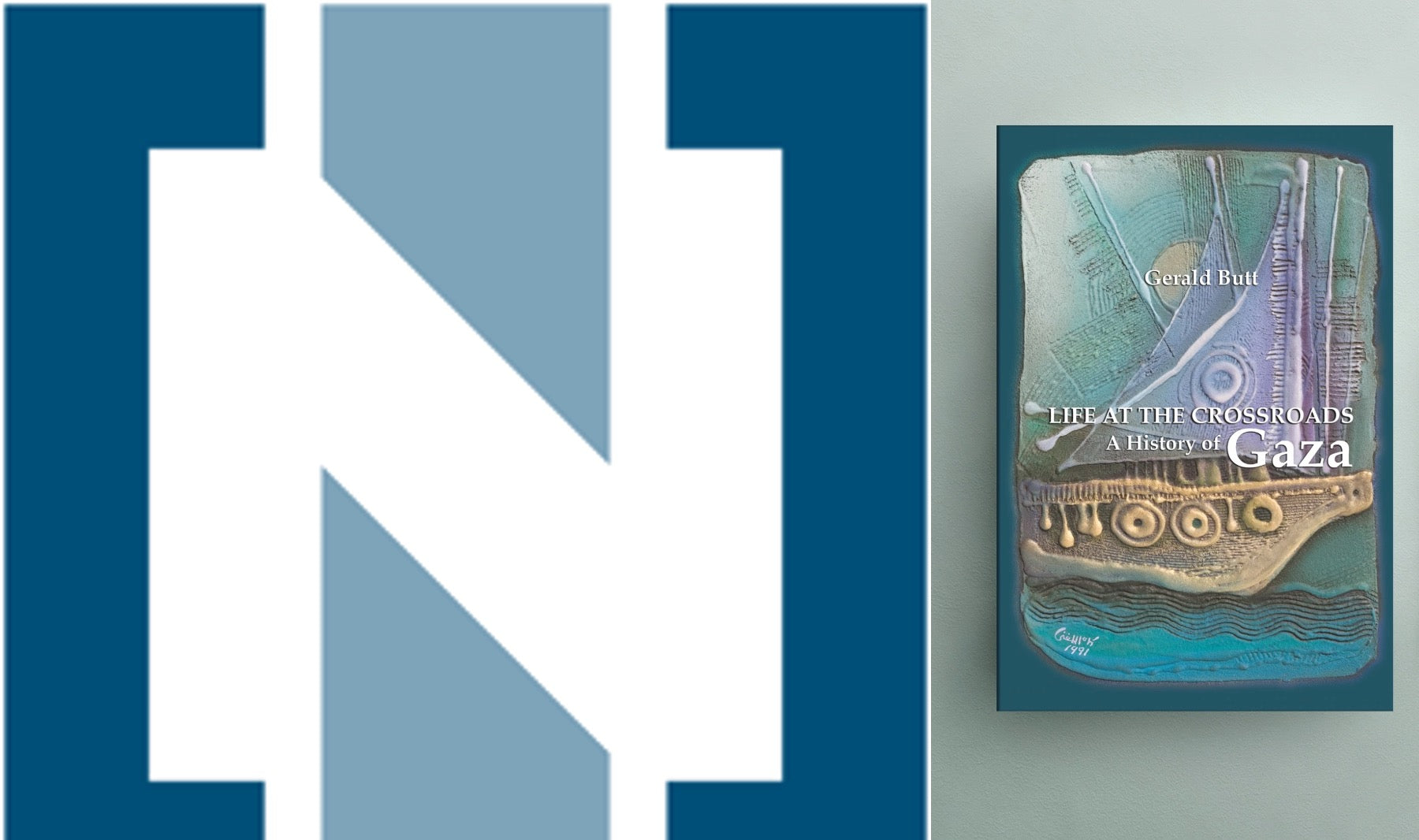
THE NATIONAL
Author Issues Grim Warning on Gaza
NICOSIA - As grieving Gazans rebuild their shattered lives in the aftermath of 's recent onslaught, they can take cold comfort from their remarkably rich and turbulent history.
They are among the world's longest-suffering people but also its greatest, most resilient survivors, as Gerald Butt makes clear in Life at the Crossroads, his timely new history of Gaza, which will be launched at tomorrow's international book fair in Abu Dhabi.
Butt places Gaza 's grim present in a historical context and concludes with a dismal prognosis: the territory's isolated and bottled up people are becoming a "race apart" from other Palestinians.
"Since 1948 when 200,000 Palestinian refugees were dumped in Gaza - a territory no one wants and with no resources - its role has changed from being a historic crossroads to a cul-de-sac," Butt said in an interview in , where he lives.
"The Gazans are a breed apart from the West Bankers, whom they see as soft and pampered," he said. "The experience of the Gazans has been more brutal and harsher."
It is no surprise that the first intifada, in 1987, erupted in Gaza , Butt said. "They are a people who have always resisted occupation."
The longer Gazans and the inhabitants of the West Bank live apart, the harder it will be to integrate them into a Palestinian state, he said. "Gaza has to be reattached to the West Bank."
It is a warning the Obama administration would do well to heed as the braces for another attempt to resolve the Middle East 's core problem, said Butt, a former BBC Middle East correspondent and fluent Arabic speaker who has written four other books.
Life at the Crossroads is suffused with sympathy and admiration for the Gazans.
The sandy strip of overpopulated coastal real estate - home to 1.5 million people squeezed into a mere 360 sq km - has been conquered innumerable times over the millennia but no invader has held it for long. Nor was conquest ever easy. Alexander the Great, for instance, besieged Gaza for two months before he managed to capture - and destroy it - in 332BC.
In 1917, 's Sir Archibald Murray twice failed to seize Gaza from the Ottoman Turks in campaigns that claimed 4,000 Allied lives. It took a third offensive under a new commander, Gen Sir Edmund Allenby, to capture Gaza after a withering artillery bombardment of the city.
Yet, writes Butt, "looking back over three millennia of history it is hard to think of when the people of Gaza were in a more desperate state than after the 2009 war", which in 22 days claimed the lives of 1,300 Palestinians, among them about 500 women and children.
With eloquence typical of his lucid style, Butt writes: "Never had the world witnessed a war in which the pathetically weak party was prepared to endure so many civilian casualties for so long. Seldom can a territory have felt so abandoned in the face of such an onslaught."
The Gazans suffered less during the First World War, a conflict infamous for its bloodletting.
During the British attacks of 1917, most of the civilian population was able to flee while their city was wrecked. "In 2008-2009, Gazans had nowhere to go," Butt writes. "The degree to which 1.3 million people are trapped in a vast open prison was presented clearly to the world."
Inevitably, repeated conflict in recent decades has given rise to the popular image of Gaza as squalid place of violence, poverty and political turmoil. But Life at the Crossroads argues that such a portrayal is misleading because it ignores the rich historical and cultural heritage of one of the world's oldest living cities, populated by an immensely resourceful people.
Gaza's storied history of invasion and internal renewal is linked to the sagas of ancient , Babylonia, Assyria, , and Rome , which the book covers in its opening chapters. If Gaza has no great antiquities to rival those of Cairo, Damascus, Istanbul or Jerusalem, it is because they were destroyed by the armies of all the great dynasties of the Middle East that fought to control the territory. Known as "the way of the sea" in the Old Testament, Gaza was a critical link for ancient empires such as Mesopotamia and , not only for trade but also for conquest.
Gaza, however, was absent from the itineraries of the first European pilgrims and tourists to the Holy Land in the 19th century. Baedeker's Palestine and guide of 1898 included a section on Gaza, but claimed disdainfully that since the defeat of the Crusaders in the mid-13th century " Gaza has been a place of no importance".
Gen Allenby did find something of interest to occupy his free time during the long-build up to his Gaza campaign. While his rank and file moped with boredom, the British commander, a keen ornithologist, revelled in a spot of birdwatching. Delighted to see that Gaza was a crossroads for migratory birds as much as for conquering armies, he stationed a " Yorkshire sergeant at a watering place which migratory birds frequented".
Whenever a new species arrived, "the commander-in-chief would forget the cares of the campaign and slip off to the pond to see the bird for himself". The anecdote, which Butt unearthed from a London newspaper, is one of many quirky titbits of information that spices his narrative.
The words of a tourist brochure published by Gaza's municipality after the Oslo peace accords between and the PLO in 1994 are among the most poignant in Butt's book. "History, beauty and warm hospitality: That's Gaza ", proclaimed the brochure whose cover was illustrated by a montage of images: waves breaking on a sandy beach, a palm-lined boulevard and a mosque gateway.
It was a time of rare optimism for Gaza, which was meant to serve as the cornerstone of a future Palestinian state that would be linked by a motorway to the West Bank .
"Like the Phoenix, symbol of Gaza , the city is born again from its ashes and is taking on a new lease of life," the brochure said.
Israeli troops had redeployed within the territory, Yasser Arafat, the figurehead of the Palestinians' struggle for independence, had arrived amid scenes of tumultuous triumph to establish a headquarters there after decades in exile. An international airport was built where Bill Clinton touched down in 1998 in the first visit by an American president to an area under Palestinian control.
The first edition of Life at the Crossroads was published during that time of hope in 1995. The relaunched edition, which has been thoroughly revised and updated, puts that period in its sad perspective.
"Gaza in 1994, as in the many decades and centuries before, appeared to be serving as a crossroads - this time it was traversed by Palestinian people en route from a life in diaspora or under Israeli occupation towards statehood," Butt writes. "That, at least, was the dream."
By Michael Theodoulou, Foreign Correspondent for The National
March 16, 2009 - UAE


